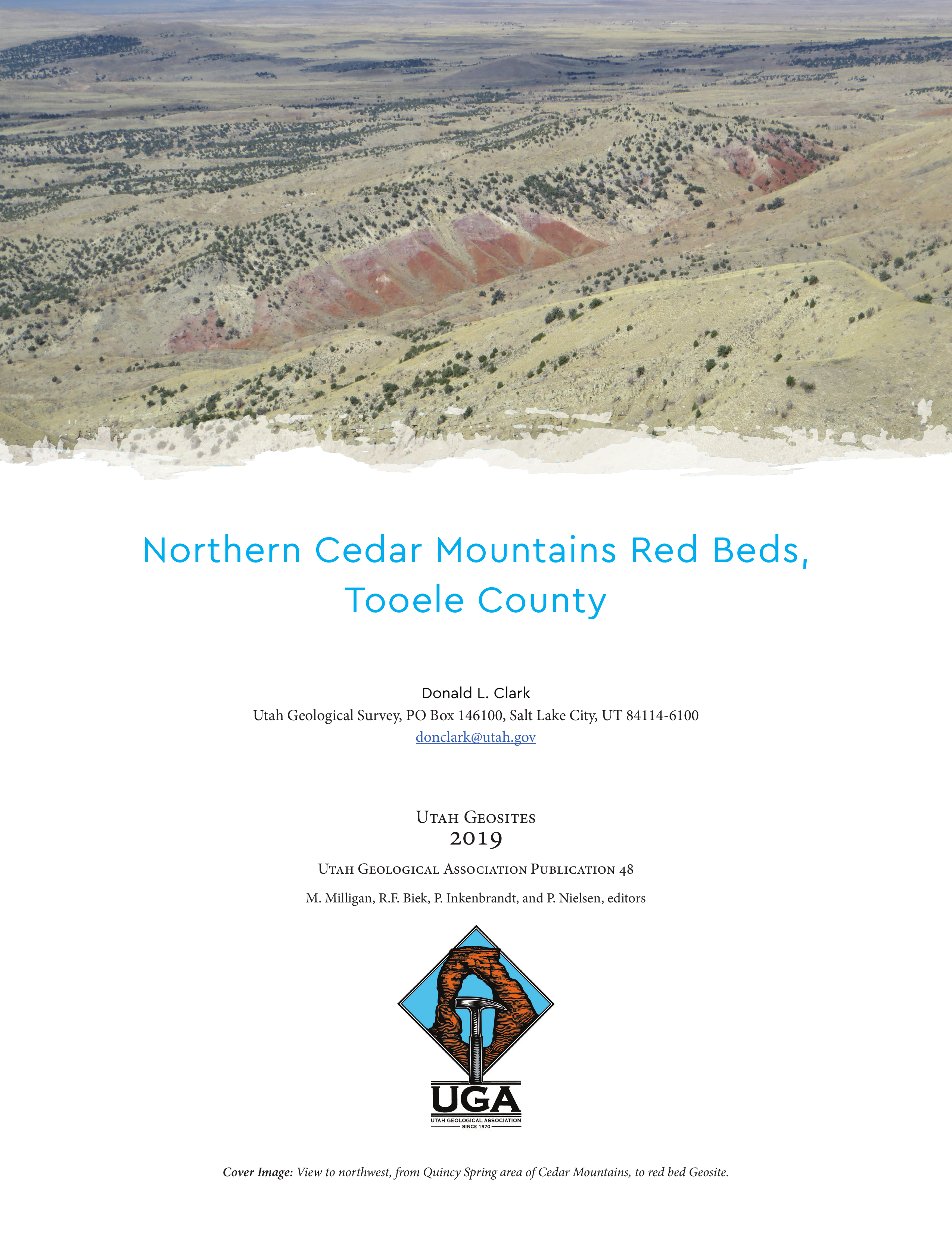Northern Cedar Mountains Red Beds, Tooele County
Abstract
Recent mapping for the Tooele 30' x 60' quadrangle geologic map revealed more information about interesting exposures of red beds cropping out in an 11-mile (18-km) swath along the northwestern flank of the Cedar Mountains (Clark and others, 2017, 2019 in review). They are unusual because such rocks are seldom preserved in northwestern Utah, an area known for thick thrust sheets of Paleozoic marine carbonate and sandstone. These rocks were first mapped by Robert Maurer for his Ph.D. dissertation on the geology of the Cedar Mountains (Maurer, 1970). He called them North Horn (?) Formation and noted the presence of fresh-water snails (Gyraulus sp.) that a paleontologist said were probably of late Paleocene or Eocene age. The North Horn Formation is considered Late Cretaceous (Maastrichtian age) to Paleocene or Eocene (~70 to 60 Ma) in age. However, recent detrital zircon analysis from sandstone in the unit suggest a much older age, with the youngest grains (maximum depositional age) of 117 Ma, or Early Cretaceous, Aptian (UGS and O’Sullivan, 2017). Two samples of gray mudstone taken for fossil pollen in the unit did not produce any usable material. Inspection of these rocks by Don DeBlieux (Utah Geological Survey paleontologist) revealed no bone or other biological material at this location.

Copyright (c) 2019 Utah Geological Association

This work is licensed under a Creative Commons Attribution 4.0 International License.

